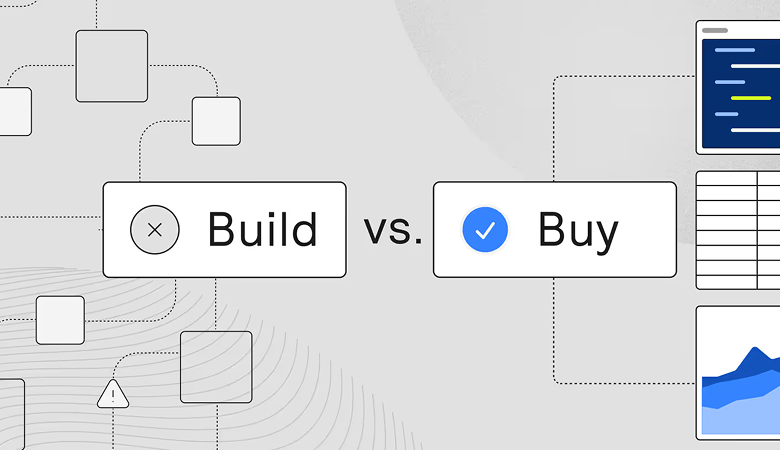Did you know that CEOs in tech firms see revenue models as the primary driver of transformation? This fact highlights the importance of choosing the right pricing strategy for your SaaS offering.
Our article explores the tiered pricing model. We’ll break down its benefits, implementation, and compare it to other models. Our goal is to help you make informed decisions and see if this model would work for your SaaS product.
You'll also learn:
- How tiered pricing works and why it's effective for SaaS
- The differences between tiered pricing, volume pricing, and value-based pricing
- How to structure your pricing tiers based on features, usage, and support
- Real-world examples of SaaS companies using tiered pricing successfully
- The pros and cons of tiered pricing compared to other models
- How to choose the right pricing model for your SaaS business
- How Orb is the done-for-you billing platform that helps with tiered pricing models
First of all, we need to explain what tiered pricing is and how it works in SaaS.
What is tiered pricing?
Tiered pricing is a pricing strategy that allows SaaS businesses to offer their solutions at different price points. These price points are based on the value or quantity that customers purchase. It can be a great way to attract a wider range of customers and increase revenue.
Here are some of the key benefits of using tiered pricing in SaaS:
- More revenue: Tiered pricing can help businesses increase revenue. This goal can be met by encouraging customers to purchase more units or upgrade to higher tiers.
- Happier customers: Tiered pricing can help customers feel like they are getting a good deal, which can lead to higher customer satisfaction and loyalty.
- Simplified pricing: Tiered pricing can make it easier for customers to understand and compare prices. It’s also much easier to manage upgrades, as they know what to expect in the next tier.
How does tiered pricing work?
A tiered pricing strategy is like a staircase, where each step up offers more value — but also comes at a higher cost. It's a popular pricing model for SaaS companies because it caters to different types of customers and their specific needs.
Breaking down the tiers
Here's how tiers typically differ:
- Features included: As you move up the pricing tiers, you unlock more features. A basic tier might offer core functionality, while higher tiers add advanced or specialized tools. This approach allows customers to start with what they need and upgrade as they grow.
- Usage limits: Tiers can also vary in usage limits. These limits might include the number of users allowed, storage capacity, and API calls. Keep in mind metrics should be relevant to your SaaS offering. Higher tiers typically provide more generous limits.
- Customer support: The level of support often increases with each tier. Basic tiers might offer email support or knowledge base access. Premium tiers might include priority phone support or dedicated account managers.
Tiered pricing examples from actual SaaS companies
Let's take a look at how three different SaaS companies approach tiered pricing:
Crazy Egg
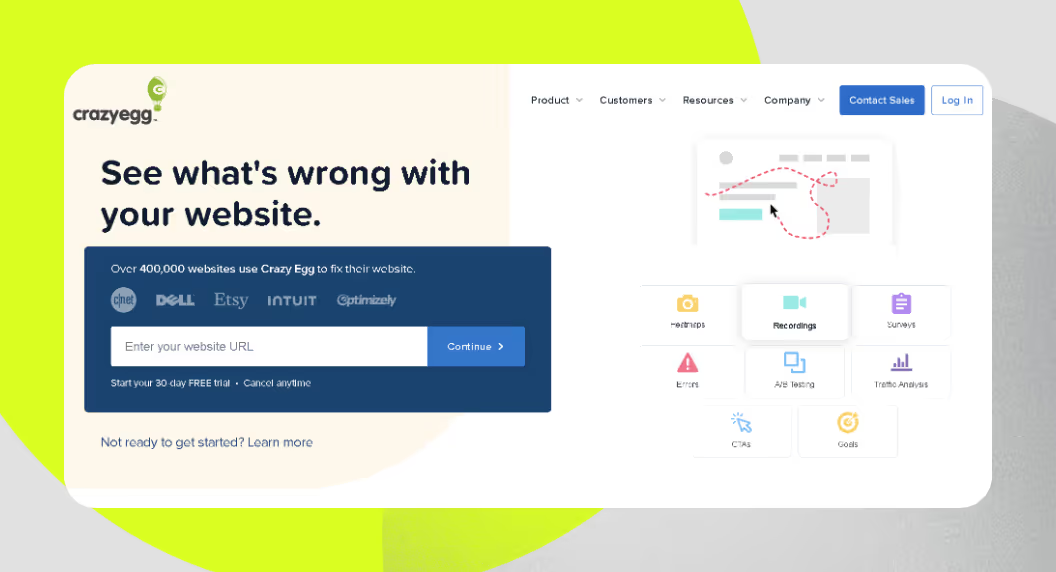
Crazy Egg is a website optimization tool. It offers a five-tiered pricing structure for its heat mapping and user behavior analytics solutions. This multi-tiered approach allows them to cater to a wide range of customers, from individual website owners to large agencies.
The tiers are named Basic, Standard, Plus, Pro, and Enterprise. Each tier increases the number of tracked pageviews, recorded sessions, and websites allowed.
Higher tiers also unlock advanced features. These features include heatmaps for mobile devices, error logging, and user session recordings.
Crazy Egg's tiered pricing is a hybrid model. It uses usage-based pricing, where the cost increases with the volume of tracked data. Crazy Egg combines it with feature-based pricing, where higher tiers unlock more advanced features.
Formstack
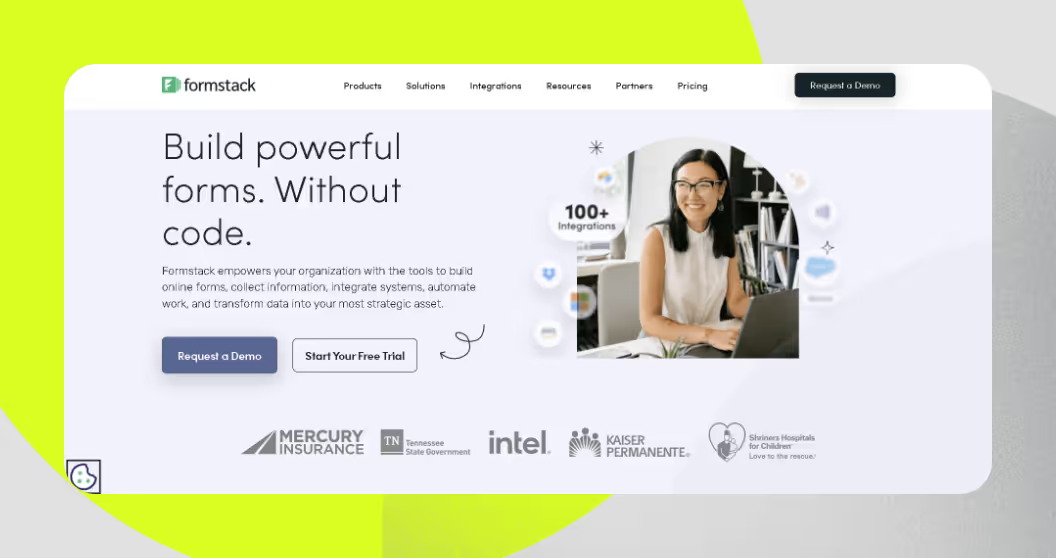
Formstack is a platform for creating online forms and documents that takes a different approach. They offer a multi-level tiered pricing strategy across their various products.
For example, their "Forms" offering combines forms, documents, and signing capabilities. It has three tiers: Forms, Suite, and Enterprise.
Each tier increases the number of forms, documents, and submissions allowed. They also add more advanced features like integrations and branding options.
Formstack's tiered pricing is a hybrid approach. It's partly feature-based, with higher tiers unlocking more features. It also incorporates usage limits, as the number of forms and submissions allowed increases with each tier.
Unbounce
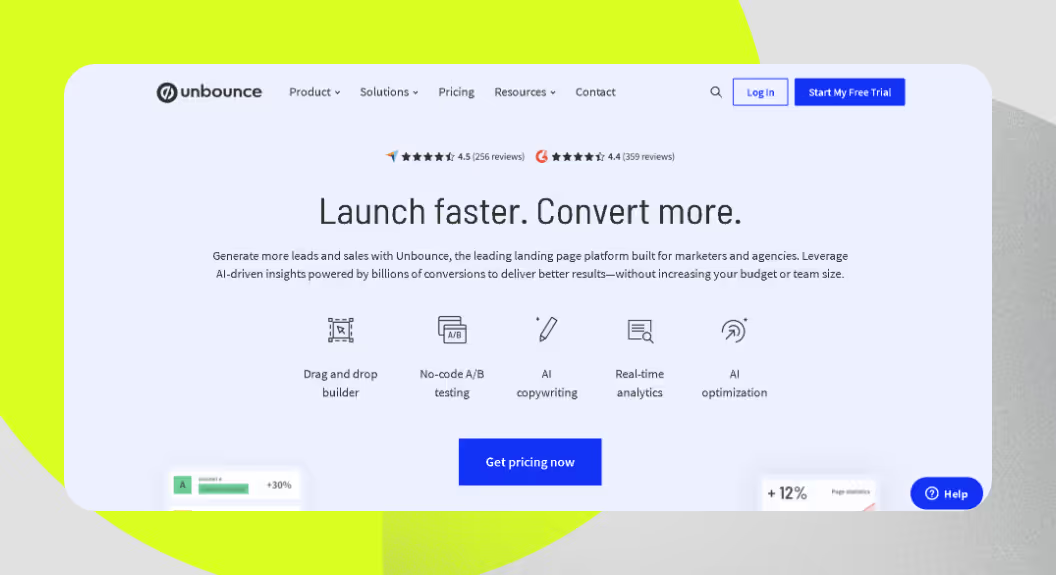
Unbounce is a platform specializing in landing page creation and conversion optimization. They use a tiered pricing model that caters to a range of marketing needs and budgets. They currently offer four distinct tiers:
- Build: This tier includes core features like a drag-and-drop builder, templates, and basic integrations, which make it easy to create and launch professional-looking landing pages.
- Experiment: This tier includes A/B testing, allowing users to experiment with variations of their pages to see which performs best. It’s suitable for those who want to improve their conversion rates through data-driven experimentation.
- Optimize: The Optimize tier offers features like popups and sticky bars to capture leads and boost engagement. It also has refined A/B testing and higher conversion limits. This tier caters to companies with growing traffic and conversion goals.
- Concierge: This top-tier plan is tailored for high-growth businesses and high-demand marketing teams. It provides a fully managed solution. They even offer dedicated support from conversion experts who can help optimize pages and campaigns.
Unbounce's tiered pricing combines feature differentiation with increasing levels of service. As you move up the tiers, you unlock more advanced features, higher conversion limits, and greater support.
Why tiered pricing works well for SaaS companies
Tiered pricing has become a popular strategy for SaaS companies for several reasons. It aligns well with the subscription-based nature of SaaS offerings. It also allows businesses to cater to a wide range of customer needs and budgets.
Let's explore the key factors that make tiered pricing a winning approach for SaaS.
Flexibility for diverse customer needs
SaaS companies often serve a diverse customer base, from single users and startups to large enterprises. Each customer segment has unique needs and budgets. Tiered pricing allows businesses to tailor their plans to serve these different segments effectively.
Small businesses, for instance, might opt for a basic plan with essential features at an affordable price point. As they grow, they can easily upgrade to a higher tier with more advanced functionalities.
Enterprises, on the other hand, can choose a premium tier that offers a comprehensive suite of features, dedicated support, and higher usage limits. This flexibility ensures that every customer, regardless of their size or requirements, can find a suitable option.
Opportunities for upselling
Tiered pricing provides a natural path for upselling and revenue expansion. As customers become more familiar with the product and their needs evolve, they are more likely to upgrade to higher tiers with more advanced features or higher usage limits.
SaaS companies can encourage this progression by highlighting the value-adds exclusive to premium tiers. Extra features might include features such as advanced analytics, priority support, or custom integrations.
By effectively showcasing the benefits of upgrading, SaaS companies can incentivize customers to move to higher tiers. Taking this approach can help them increase their average revenue per user (ARPU) and drive revenue growth.
Clear value communication
Tiered pricing makes it easier for users to understand the value proposition of each plan. By clearly outlining the features, usage limits, and support levels included in each tier, businesses can help customers compare options and make informed decisions.
The use of descriptive tier names, such as "Basic," "Pro," and "Enterprise," further sets expectations for each plan. This transparency in pricing builds trust with customers while simplifying the buying process.
Remember: When customers can easily see the trade-offs between different tiers, they are more likely to choose the plan that best aligns with their needs and budget.
Tiered pricing vs. volume pricing
Another common approach to pricing is volume pricing. This model is particularly useful for SaaS businesses selling measurable quantities of their solution. Let's explore the differences between these two models and weigh their pros and cons:
What is volume pricing?
Volume pricing is a strategy where the price per unit decreases as the users purchase larger quantities. It's like buying in bulk — the more you buy, the less you pay per item.
This model is often used for products like cloud storage, where the cost per gigabyte might decrease as the customer purchases more storage space.
Key differences between tiered pricing and volume pricing
The main difference between tiered pricing and volume pricing lies in how discounts are applied. Let’s take a closer look:
- With tiered pricing, discounts are applied incrementally. The customer pays a certain price per unit within a specific range. Then, as they move into the next tier by purchasing more, the price per unit decreases.
The caveat here is the price is lower only for the units within that higher tier.
- In contrast, volume pricing applies discounts across the board. Once the customer reaches a certain purchase volume, the discounted price applies to all units purchased. Tiers do not matter in this case.
Tiered pricing pros and cons
Now, let’s put tiered pricing’s pros and cons under the magnifying glass:
Pros:
- Tiered pricing provides a clear and predictable cost structure for customers.
- It allows businesses to showcase value at different service levels.
- The model creates a natural upselling path as customers' needs grow.
Cons:
- Tiered pricing requires thoughtful segmentation and messaging to be effective.
- This pricing model can potentially lead to customer confusion if tiers are too similar.
- It may require more complex billing systems to manage different tiers.
Volume pricing pros and cons
Let’s take a closer look at volume pricing’s stronger and weaker points:
Pros:
- Volume pricing appeals to customers with scalable, predictable usage growth.
- It encourages high-volume commitments.
- It’s often simpler to implement and manage than tiered pricing.
Cons:
- Volume pricing offers less flexibility for customers who don't fit predefined usage levels.
- The model may undervalue low-usage customers.
- It can make revenue forecasting less predictable if usage patterns fluctuate.
How does tiered pricing compare with value-based pricing?
As you know, tiered pricing structures offerings around different levels of features and usage. Value-based pricing takes a different approach. It focuses on the perceived value of the product or service to the customer. Let's explore how these two models compare.
What is value-based pricing?
With value-based pricing, a solution’s price is based on how much users think it’s worth. This perception of value can be influenced by many factors. Think brand reputation, product features, customer service, and the overall customer experience.
Using value-based pricing is about understanding what the user is willing to pay for the benefits they get.
Real-life examples of value-based pricing in SaaS
We’ll now share three examples of SaaS companies that implement some form of value-based pricing. Let’s zoom in:
Slack
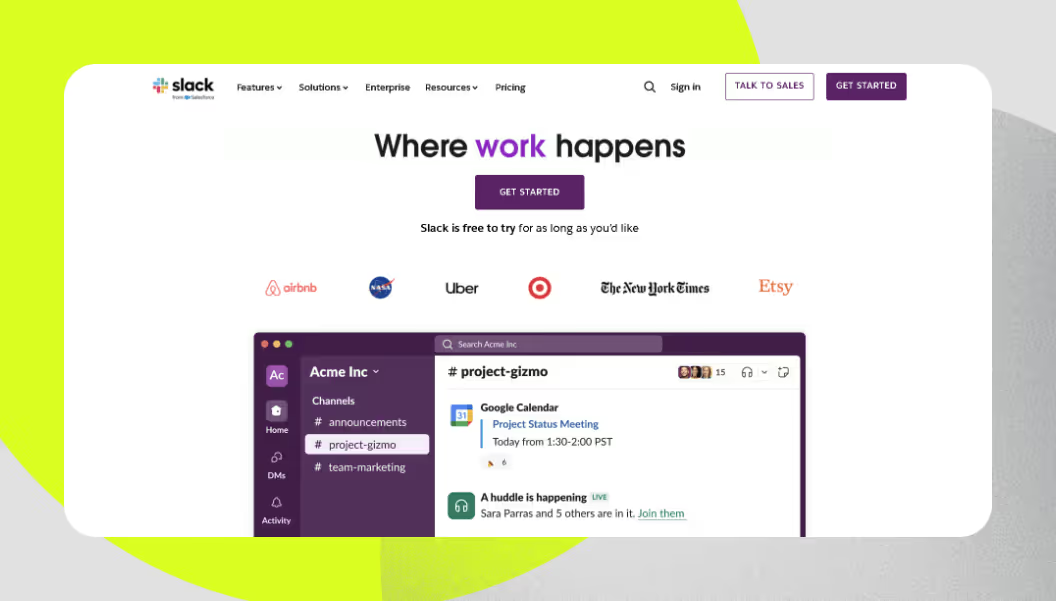
Slack is a popular workplace communication tool. It uses a value-based pricing approach that goes beyond simply charging per user. They recognize that their value lies in facilitating team communication and collaboration, which can lead to increased productivity and efficiency.
Their pricing reflects this value by offering plans that cater to different team sizes and needs. Higher-priced plans unlock features that improve collaboration and simplify workflows.
Zoom
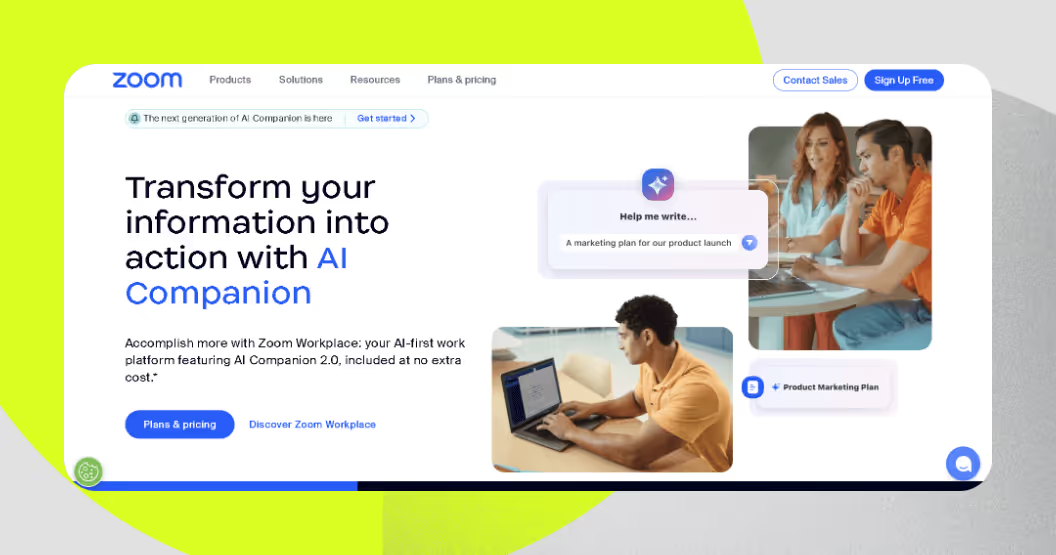
Zoom's video conferencing software shows value-based pricing by considering the diverse needs of its users. They offer different plans based on features like meeting duration and participant capacity.
Their pricing also reflects the value they provide in enabling remote work, online education, and virtual events. They understand that customers are willing to pay for a reliable and user-friendly platform that connects people across distances.
Adobe Creative Cloud

Adobe's shift to its Creative Cloud suite is a prime example of value-based pricing. They know that creative professionals rely on their apps for their livelihood. They also know they are willing to invest in tools that empower their creativity.
Their pricing reflects the ongoing value they provide through updates, new features, and access to a vast creative community. By offering flexible subscription options, they cater to different needs and budgets. They also ensure customers have access to the latest creative tools.
Comparing tiered and value-based pricing
Tiered pricing and value-based pricing are not mutually exclusive. In fact, many SaaS companies use a combination of both approaches.
Let’s look at exactly how they are different:
- Tiered pricing provides a clear framework for structuring offerings around different levels of features and usage.
- Value-based pricing helps determine the overall price point for those tiers based on the perceived value delivered to the user.
Pros and cons of value-based pricing (compared to tiered pricing)
Let’s see how value-based pricing compares to tiered pricing in terms of pros and cons:
Pros:
- Value-based pricing can potentially lead to higher profits if users perceive high value.
- It allows for more flexible pricing adjustments based on market conditions.
- It can foster stronger customer relationships by focusing on value delivery.
Cons:
- Value-based pricing requires a deep understanding of customer needs and perceptions.
- It can be challenging to quantify and communicate value effectively.
- The model may lead to price inconsistencies if value perception varies across users.
Try Orb to gather customer insights and test out tiered pricing
We've explored the ins and outs of tiered pricing models for SaaS, and highlighted their benefits and how to effectively implement them. Now, let's talk about how Orb can simplify the process and allow you to optimize your pricing strategy.
Orb is a done-for-you billing platform that takes the complexity out of managing tiered pricing and usage-based billing. It provides the tools you need to track usage, create flexible pricing plans, and gain a deep understanding of your customers' behavior.
Here's how Orb can help you master tiered pricing:
- Easy usage tracking: Orb's metering infrastructure tracks every billable event. We help you make sure you have a single source of truth for your billing data. We eliminate the need for manual calculations and help reduce the risk of errors.
- Flexible pricing models: Orb lets you manage diverse pricing tiers. You can experiment with different pricing structures and adjust your pricing strategy as your business evolves. You can even implement tiered pricing and prepaid credits — all in one place.
- Decisions based on data: Orb provides detailed financial reports. We also offer insights into your revenue streams and customer behavior. This data helps you spot upselling opportunities and improve your customer success initiatives.
- Lots of integrations: Orb integrates with popular data warehouses and accounting software. We streamline your billing operations and reduce manual effort.
- Customized billing solutions: Orb's interface and custom SQL editor give you the power to define your own usage metrics and tailor your pricing models to perfectly match your business needs.
Ready to take control of your tiered pricing strategy? With flexible pricing options available, you can find a plan that perfectly suits your business needs.

.avif)

